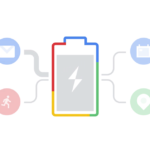
One of the problems that we usually have in our devices over time is the degradation of some components. Some call it planned obsolescence, others just call it wear and tear. One of the components that degrade the most is the battery. We can start with a terminal that does not need to be recharged in a full day of use, but over time we will end up needing to recharge it several times a day. With this in mind, Android released adaptive charging on our devices. An adaptive charging feature has been introduced in the latest versions of Android
We usually notice it. The longer the life of our mobile device, the greater the degradation of the battery. This is due to battery life. Over time, batteries lose capacity and they won’t last as long as they did to start with. A new battery has a service life of about 100%. This means that we have the full potential of our battery available.
What eats away at the battery is the constant cycle of charging and discharging. Charging the phone constantly is going to cause the battery to lose its useful life little by little. Phones like those of Xiaomi, bring their own version of optimized charging keep the phone with a charge between 20% and 80% is the best when it comes to taking care of the battery, but it is not always somewhat realistic.
What we usually do is put the phone on charge at night at bedtime, to wake up with 100% battery. In this case, while we sleep, the battery is kept in a cycle between 99 and 100% for hours. Typically, the battery of our smartphone is designed to store up to 80% of the useful life per 500 charge cycles. This depends, in most cases, on the use we give the phone. If we charge the phone two or more times a day, it will be normal for it to degrade sooner. In this sense, adaptive charging is the solution to our problems.
The adaptive load takes care of keeping the battery at 80% during most night hours. Just before we wake up will allow the battery to charge up to 100%. This means that we avoid the constant cycle between 99% and 100% there is during the night, thus prolonging battery life. “Adaptive Charging” is the name that Google has given to this technology in the Pixels.
Other manufacturers also have similar technology with different names, such as Samsung with its “Adaptive Battery”. For Xiaomi and iPhone, the name is the same as Google. The Pixel 6 and 6 Pro optimize battery use Adaptive charging normally uses our alarms and usage habits to determine when is the best time to reach 100% Of the battery. If we see that the battery is not fully charged when we get up, our device will need more time to learn our routines.
Battery optimization sounds good in theory, but it can go very far. Samsung in particular is guilty of taking to the extreme the measures to be used to maximize battery life. These measures can negatively affect the experience with our terminals. These companies make applications, for example, close if we are not using them, which can mean miss notifications on our terminals and a poorer app experience. Usually, most android devices handle optimizations very well.
Battery life is one of the areas that companies are emphasizing so that we have the best possible experience. Therefore, if we question whether we should have activated battery optimization in our terminals, the answer is a yes resounding. As long as we do not have problems with our terminal for having this functionality in our devices, the battery will thank us in the long term.
Research Snipers is currently covering all technology news including Google, Apple, Android, Xiaomi, Huawei, Samsung News, and More. Research Snipers has decade of experience in breaking technology news, covering latest trends in tech news, and recent developments.